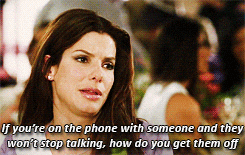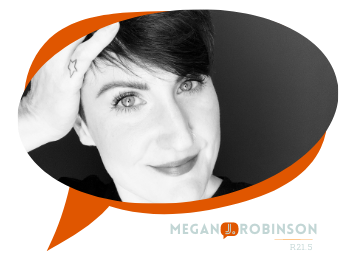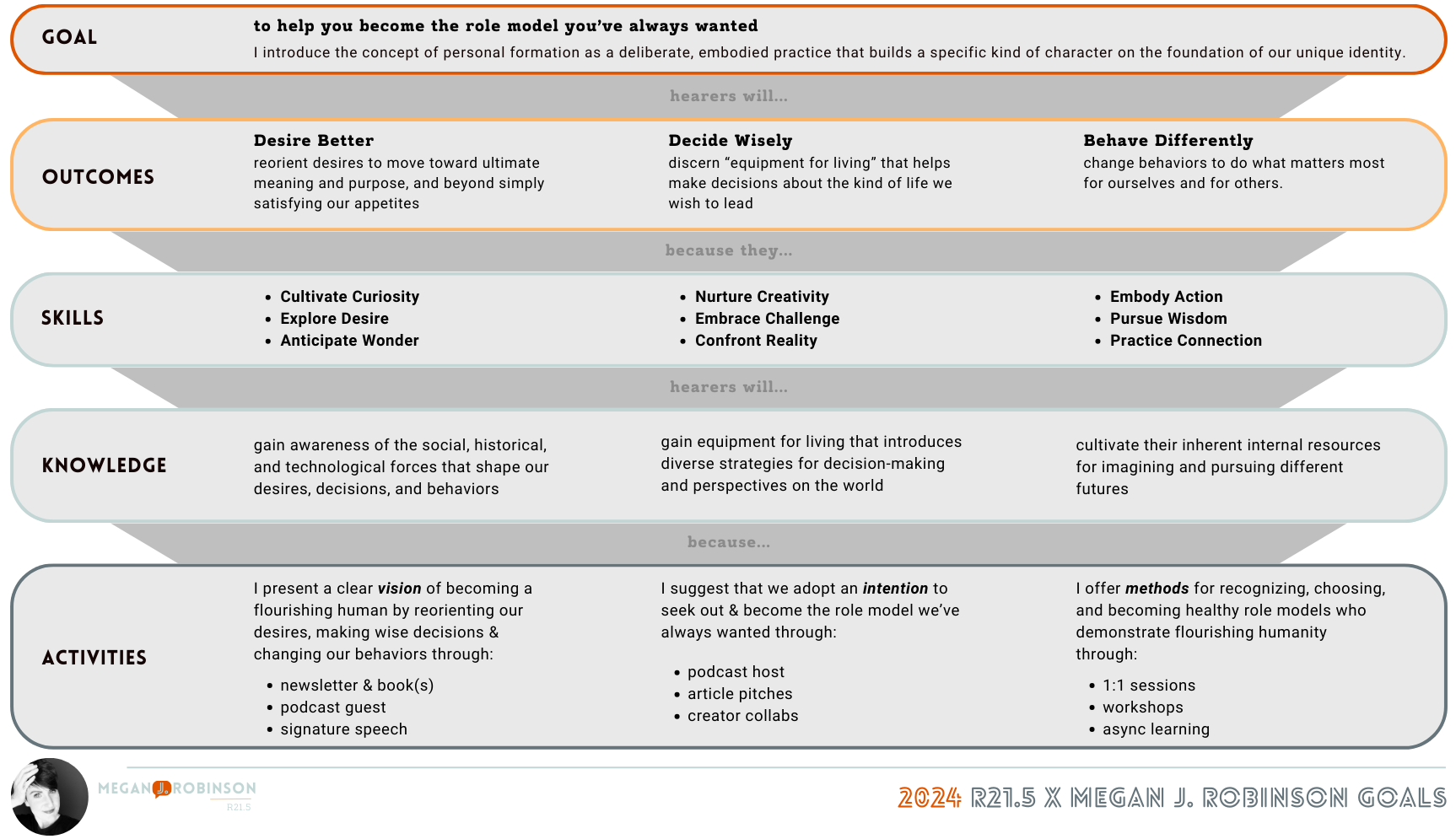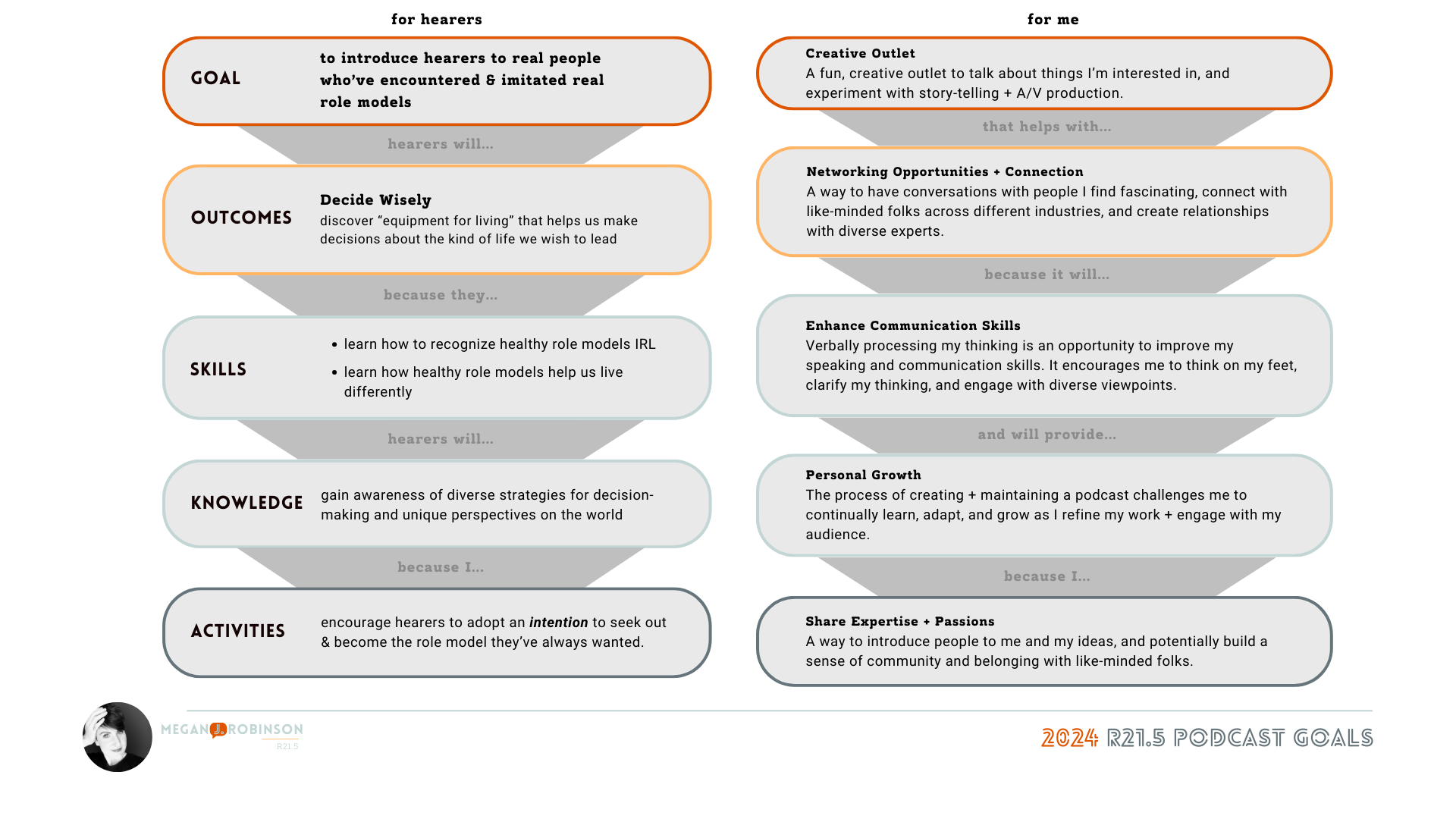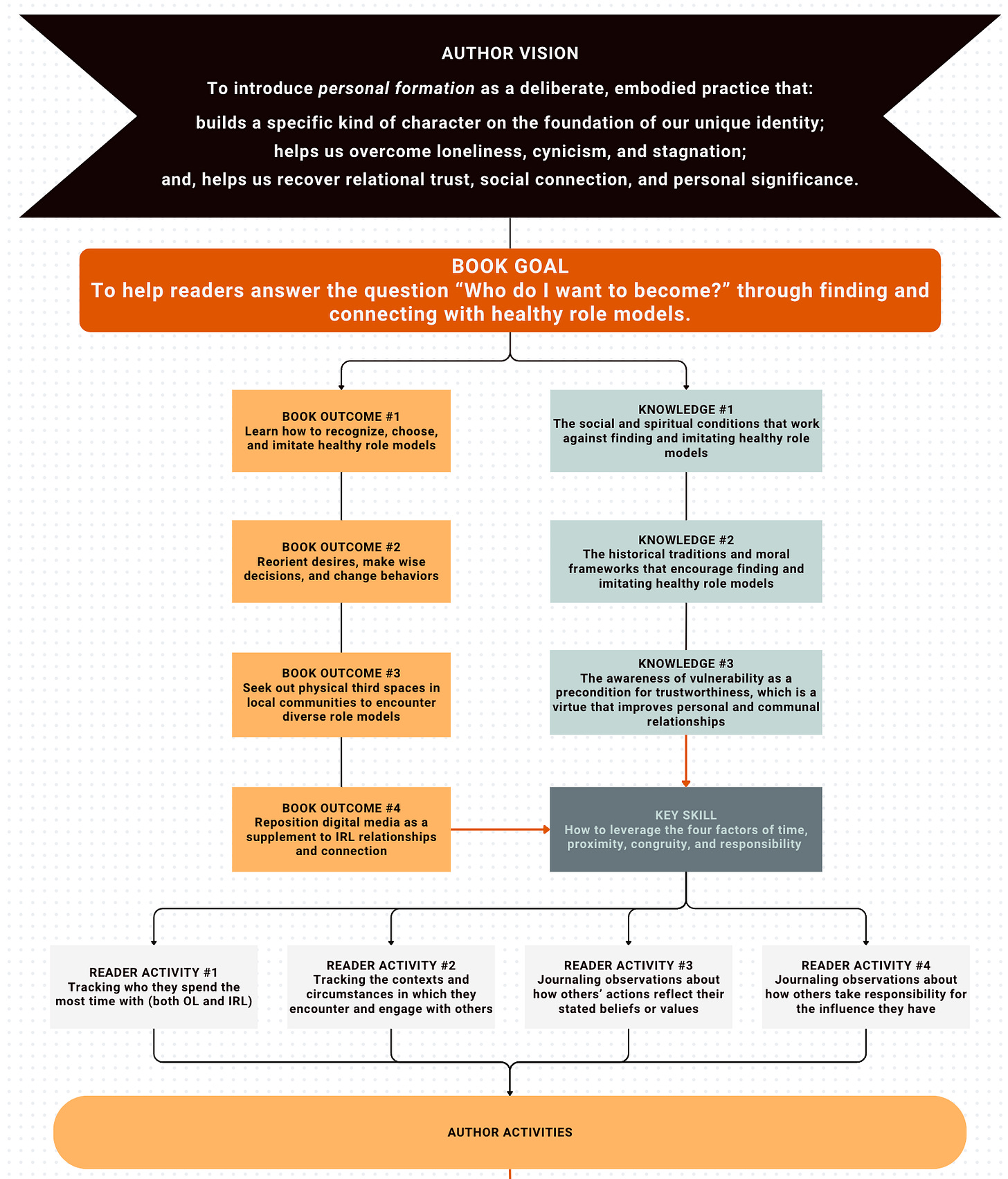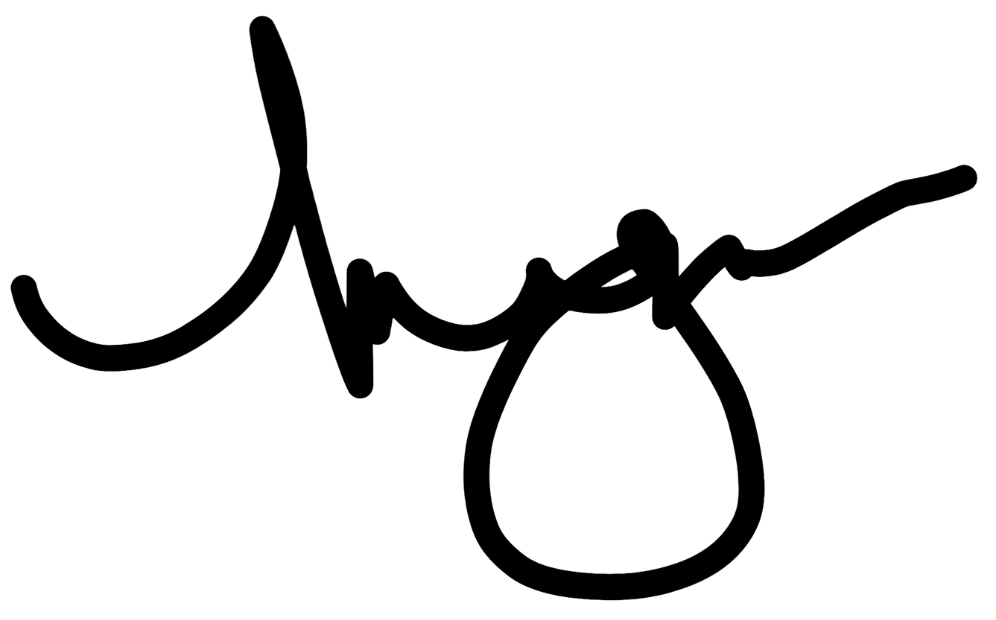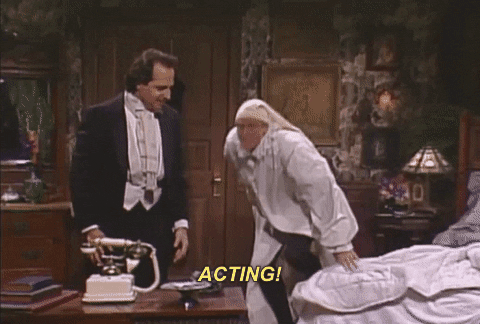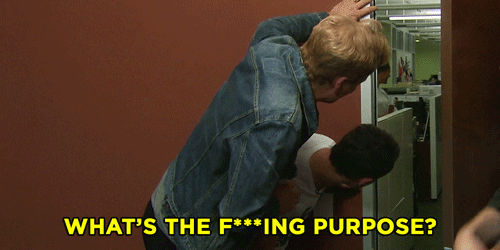Aloha!
I always think of this moment in Miss Congeniality when “Gracie Lou Freebush” goes off about the Hawaiian greeting “aloha,” which has far deeper meanings in the Polynesian language family than I’d realized. And isn’t that a nice thing to find out?
Welcome to my off-weekly off-the-cuff review of efforts, insights, and whatevers in the last few days.
This week’s notes include thoughts on:
goal-oriented design for learning, growth, and transformation
the benefits of thinking long and working short
orienting life to the important things, and why all the above matters
Goal-Oriented Design (& Why It Matters)
A year or two ago, I had the idea to offer learning design (LxD) services to professionals and experts seeking to translate their knowledge and expertise into general-interest courses: to help “experts become teachers.” I soon realized that the idea was sound; my ability to market it was…not.
That said, I learned a lot about the difference between teaching and learning, and have come down firmly on the side of fostering learning, rather than creating lectures (to paint it broadly). There exist many LxD philosophies and systems, but what resonated most for me was “backwards design,” or goal-oriented design for creating significant learning experiences.
Backwards LxD focuses on creating learning experiences that help learners (i.e., we/us)1 clarify needs and priorities, and develop mastery or growth in a given topic. The emphasis is on the learner, not the teacher.2 The process addresses six key questions:
What is the goal of this experience?
You gotta be moving toward something specific, yeah? Otherwise, we’re just wandering in the desert, and that gets old after a while.3 Valuable learning experiences provide a clear, central priority or target toward which we can move.
What are the outcomes or transformations learners should expect after this experience?
Any learning experience invites us to pursue some sort of personal transformation. The experience must promise definitive outcomes as a result of engaging or completing it.
What skills does this experience help learners cultivate?
In order to know whether we are progressing toward our desired goals and outcomes, we need to have some sense of the skills (practices and habits) that we can develop in order to move forward. What can we do, and when?
What knowledge does this experience give to, or illuminate for, learners? What knowledge should learners already possess?
We must always be clear on what we’re trying to learn, how we’re going to learn it, and why it’s important.
What activities can learners do while, or after, this experience? What actions can they take?
Any learning experience should offer suggestions for practical actions or activities that we can do in response to what we encounter.
What activities can the instructor do to help guide learners along the journey?
How does this experience execute all of the above? How does it guide us on a transformative learning path or journey?
Whether you’re designing for formal educational standards or personal growth, you can use these six questions to help organize your journey through new information and increased mastery. And I’d argue that we ought to spend the majority of our time focusing on the first two questions: goals and outcomes.
Think about it: you design for the goal of, say, making a sandwich. You’ll experience very different outcomes depending on whether that sandwich is a Philly cheesesteak or a PB&J. Those outcomes define the skills and knowledge required to produce them, and likewise, the kinds of activities necessary to acquire and develop those skills. By the time you arrive at defining the actions you take as the instructor or guide, you’ll find that there’s very little ambiguity about the topics, activities, and materials you’ll include for each outcome.
But what if the goals and outcomes aren’t so cut-and-dried as sandwich-making? What if you’re trying to create a brand-new learning experience, either for yourself or for others? What if you’re the one setting the standards and priorities?
Most of us tend to launch right into the activities and skills layers of learning, which makes total sense. We most often learn by doing, and when the goal isn’t clear, sometimes, well, solvitur ambulando.
But eventually we all come to a point of asking, “Why?” Why are we doing these things? What difference do these activities make for my life? What’s the point of it all?4
Following the whims of curiosity is vital for making the surprising connections that lead to well-rounded learning and growth. But there’s a lot of things that don’t get done without having a goal. And it’s hard to speak purposefully about life, the universe, and everything without having, y’know, a purpose.
And that’s when sitting down to think about goals and outcomes makes the difference. In the business world, this sounds like SMART goals, OKRs, leading and lagging indicators, blah blah blah. But the core concept within all of these frames centers on the necessity of having a destination. And while you may find yourself taking detours, circling round-abouts, and backing out of cul-de-sacs, eventually you’ll be able to identify the precise destination you wish to reach, or lead others toward. I promise the effort is worth it.
Here’s what this looks like for me in (finally) having clarity about what I want to do with my business. You can read down the ladder to take action, and you can read up the ladder to renew vision.
Here’s how it looks in designing for my (2025 launch?) podcast. You’ll notice that I have two sections: one for hearers, and one for me. It felt important to have a goal and outcomes for myself as a learner in the whole podcast production process, which looks very different from the goals and outcomes for the audience. But you can also see how this relates to my overall business design above.
And finally, here’s how that looks for designing my book, which…yowza. You can see that the author activities section is …ahem… not there. But you can also see how the work of defining the book’s outline and research becomes far more clear with the goals, outcomes, etc. articulated this way. Decisions about editing, revising, and organizing the manuscript then become a dynamic conversation with the LxD graph (which also undergoes revision in the journey).
Thinking Long, Working Short
Goal-oriented design also makes a difference in thinking about how you want to live your life. I recently caught a YouTube video where the speaker discussed creating a ten-year plan. I thought, “I can’t even figure out what I’m doing tomorrow, let alone ten years?!” But I tried it.
And y’know somethin’?
It sets all your hopes and dreams and choices into context.
It doesn’t mean the ten-year plan won’t change (in fact, it probably should). But it does mean that you can set priorities about what you do this year vs. next year, because the sense of having to do All the Things! Right Now!! lessens.
You realize that, actually, some of these things are “waterfalls,” and can’t be done any time soon anyway, because other things need to happen first.
Which frees you up to focus on this year, this month, this week, today.
What’s Life All About?
In the last couple of weeks, my family has received some life-altering news. We’re all fine, but adjustments Must Be Made. We’re a bit existentially rattled.
I’ve found myself struggling to articulate how my faith makes a difference. Not because it doesn’t. But rather, because my faith has, over the last few years, become the foundation of my being, and it’s difficult to talk about because it simply is. There isn’t a thought or action that doesn’t arise from the awareness of living as a citizen of another kingdom, from the sense of being adopted into the family of God through Christ.5
And that’s the ultimate goal of life: to become more fully myself in becoming more fully like Christ.
That’s it. That’s the mission. That’s the purpose.
And that’s what makes all the ten-year plans and LxD outlines and new normals worth doing.
Let’s be hopeful, creative, and wise—together.
Shalom,
Let’s work together!
I offer practice-based workshops, designed to empower participants to improve their mastery of the chosen topic and skill beyond our time together. My goal is to help individuals and groups cultivate priorities, practices, and structures that are purpose-focused, replicable, and sustainable over a lifetime.
Visit me online to learn more!
Megan J. Robinson / People Watching © 2024 by Megan J. Robinson is licensed under CC BY-NC-ND 4.0
Learners can be book readers, course participants, university students, professional team members, study groups: the possibilities are endless!
Granted, some days that awareness gets swamped by my own vast reserves of anxiety and pride.





